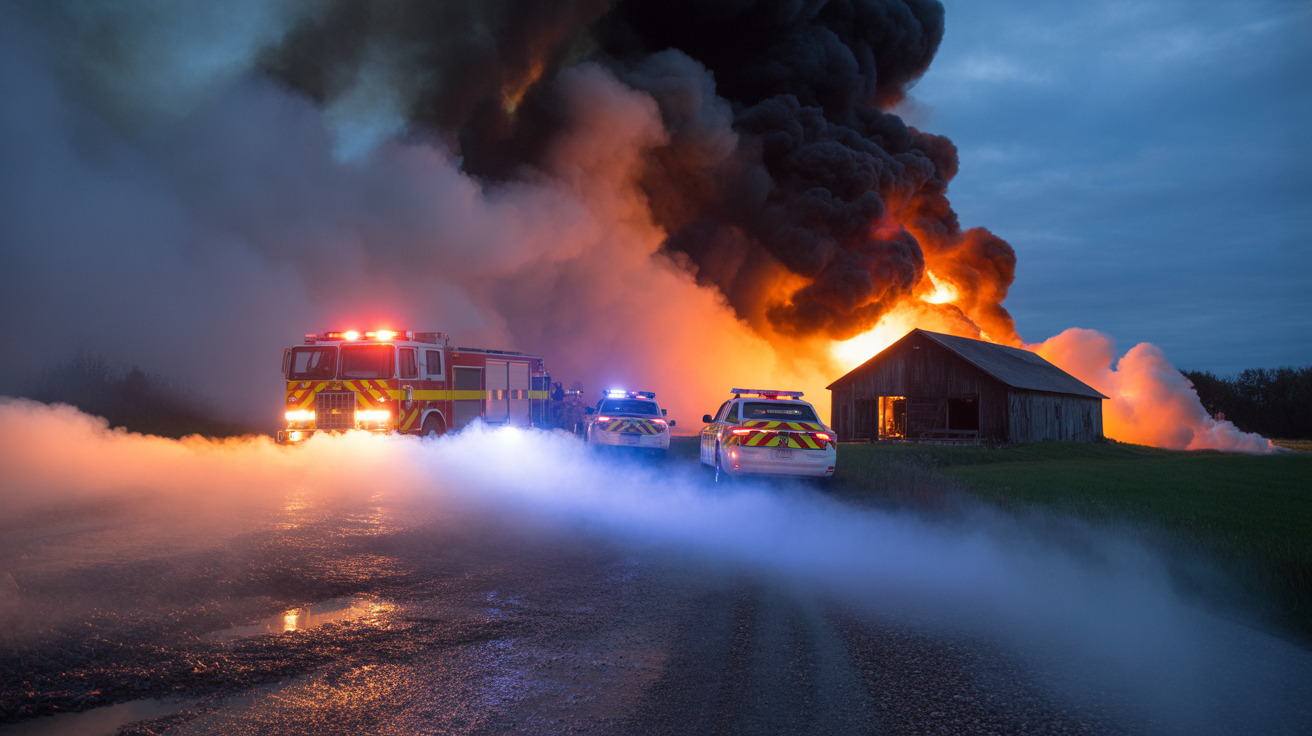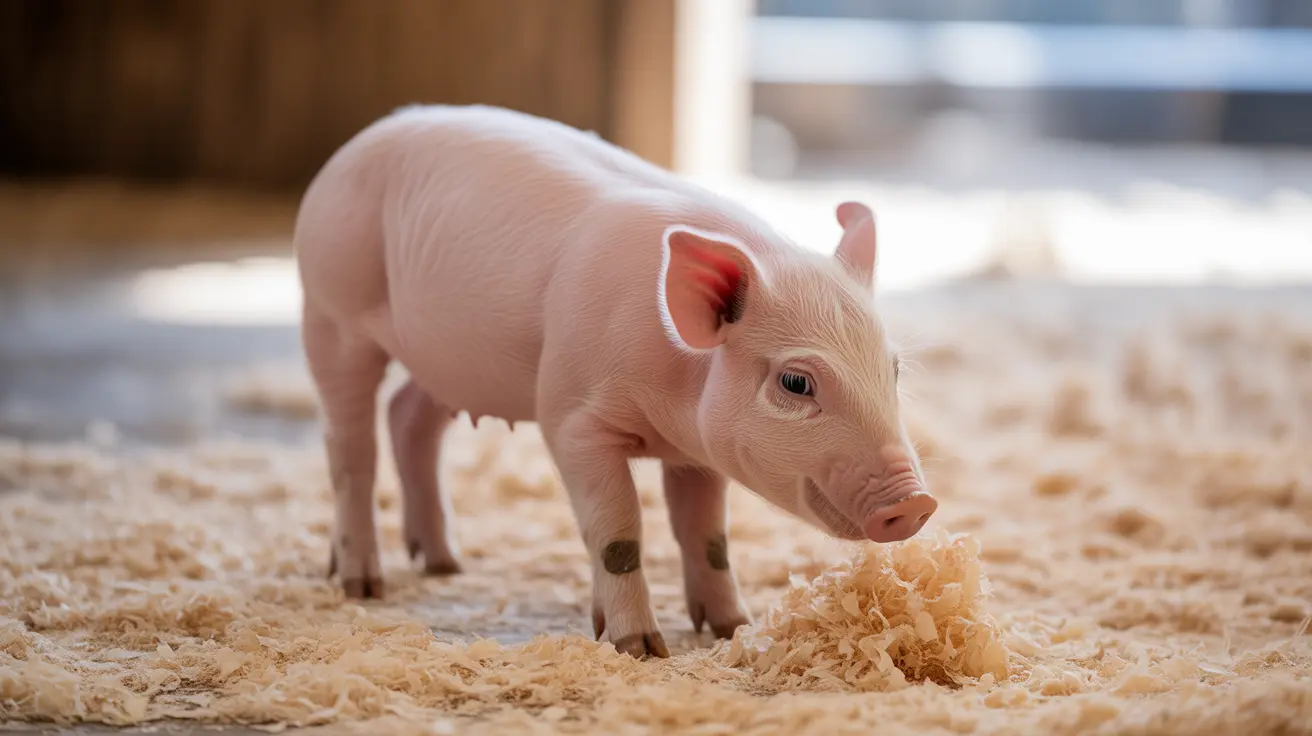A devastating barn fire at Wells Farm on Sound Avenue in Northville has claimed the lives of dozens of animals, underscoring the critical importance of barn fire safety measures for agricultural operations. The massive blaze that occurred Wednesday night completely destroyed the barn structure, serving as a stark reminder of how quickly fire can spread through agricultural buildings and the vulnerability of livestock in such emergencies.
This tragic incident highlights the urgent need for comprehensive fire prevention strategies and livestock evacuation procedures on farms across Long Island and beyond. For pet owners and small farm operators, understanding fire risks and implementing proper safety protocols can mean the difference between minor property damage and catastrophic loss of animal life.
Farm Fire Prevention Measures
The Wells Farm incident demonstrates why proactive farm fire prevention is essential for protecting livestock and agricultural property. Barn fires often spread rapidly due to the combination of dry organic materials, dust, and limited ventilation systems that can create ideal conditions for combustion.
Farm owners should regularly inspect electrical systems, as faulty wiring is one of the leading barn fire causes. Heat lamps, electrical panels, and extension cords require frequent maintenance and proper installation. Additionally, proper storage of hay, feed, and bedding materials away from heat sources significantly reduces fire risk.
Smoking policies, equipment maintenance schedules, and clear storage protocols help create a comprehensive safety framework. Installing smoke detectors, fire extinguishers, and emergency lighting systems provides early warning and response capabilities when seconds count.
Livestock Evacuation Procedures
Effective livestock evacuation procedures can save animal lives during farm emergencies. The Wells Farm tragedy emphasizes how quickly situations can become life-threatening for animals confined in barn structures.
Successful evacuation plans include multiple exit routes from all barn areas, regular practice drills to familiarize animals with evacuation paths, and designated assembly areas away from structures. Clear signage and well-maintained pathways ensure that even unfamiliar responders can quickly locate and move animals to safety.
Emergency contact lists should include veterinarians, neighboring farms that can temporarily house animals, and local fire departments familiar with agricultural operations. Having halters, leads, and transport equipment readily accessible enables quick animal movement when evacuation becomes necessary.
Farm Animal Fire Rescue Considerations
Farm animal fire rescue presents unique challenges that require specialized knowledge and equipment. Animals experiencing smoke inhalation in livestock situations need immediate veterinary attention, as respiratory damage can prove fatal even after successful evacuation.
Professional responders trained in large animal rescue understand animal behavior under stress and proper handling techniques that minimize injury during emergency situations. However, farm owners cannot always wait for professional help and should understand basic animal psychology and safe handling practices.
Veterinary care following fire exposure focuses on respiratory support, burn treatment, and stress management. Animals may require extended monitoring and specialized treatment depending on their exposure level and pre-existing health conditions.
Agricultural Property Insurance
The financial impact of barn fires extends far beyond immediate structural damage. Agricultural property insurance becomes crucial for farm disaster recovery, covering not only building replacement but also livestock loss, equipment damage, and business interruption costs.
Comprehensive farm insurance policies should include coverage for livestock, feed supplies, equipment, and temporary housing costs for displaced animals. Many standard policies have limitations on livestock coverage, making additional riders or specialized farm insurance necessary for adequate protection.
Documentation through regular property assessments, livestock inventories, and updated valuations ensures proper coverage levels and simplifies claims processing during already stressful recovery periods.
Long Island Farms and Community Impact
The Wells Farm fire represents more than individual loss—it affects the broader agricultural community and farmland protection programs across Long Island. Family farm preservation efforts recognize that each lost operation impacts local food systems, rural character, and agricultural heritage preservation.
Historic farming operations like Wells Farm contribute to the region's agricultural identity and economic diversity. When disasters strike these historic farming operations, the entire community feels the impact through reduced local food production and the loss of educational and cultural resources.
Supporting affected farms through recovery efforts helps maintain the agricultural landscape that defines rural Long Island communities.
Frequently Asked Questions
How can farm owners protect livestock from barn fires and ensure rapid evacuation?
Farm owners should install proper fire detection systems, maintain multiple cleared exit routes, conduct regular evacuation drills, and keep emergency equipment easily accessible. Regular electrical inspections and proper storage of combustible materials are essential prevention measures.
What are the most common causes of barn fires on agricultural properties?
The leading causes include electrical malfunctions, heat lamp failures, spontaneous combustion of improperly stored hay, equipment overheating, and human error with smoking or heating devices. Regular maintenance and inspection can prevent most barn fires.
What insurance coverage do family farms need for livestock and structures in case of fire?
Farms need comprehensive agricultural insurance covering buildings, livestock, equipment, feed supplies, and business interruption. Standard homeowner's policies typically provide inadequate coverage for agricultural operations, making specialized farm insurance essential for proper protection.
The Wells Farm tragedy serves as a sobering reminder that fire safety cannot be an afterthought in agricultural operations. Through proper prevention, preparation, and insurance coverage, farm owners can better protect their animals, property, and livelihoods from similar devastating losses.






